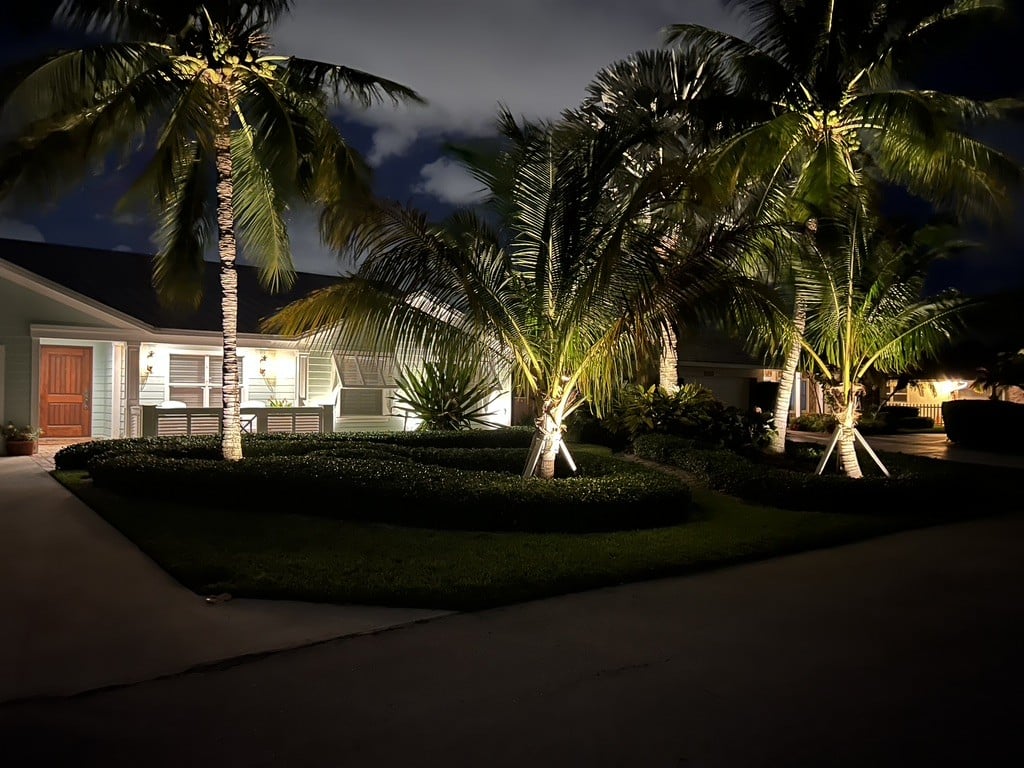
Low voltage and line voltage landscape lighting
These are two popular options for homeowners who want to enhance the beauty and functionality of their outdoor spaces. In this article, we’ll discuss the key differences between these two types of lighting and explain why low voltage landscape lighting is often a more advantageous choice.
Low voltage landscape lighting is designed to operate at 12 volts or less, which is significantly lower than the 120 volts typically used in line voltage lighting. This lower voltage means that low voltage lighting consumes less electricity and is more energy-efficient than line voltage lighting.
The system comprises a transformer that converts the 120-volt household current to a lower voltage, and a series of fixtures connected to the transformer via a low voltage cable. The fixtures can be installed in various locations around the property, such as on pathways, in gardens, or around the perimeter of the house.
Low voltage landscape lighting offers
several advantages over line voltage lighting. First, it is easy to install due to the thinner cable used to connect the fixtures, which can be buried or hidden more easily. Second, the lower voltage makes it safer to work with, reducing the risk of electric shock during installation or maintenance. Third, low voltage fixtures come in a wide range of styles, sizes, and finishes, offering homeowners greater flexibility in choosing the right lighting for their needs.
Finally, low voltage landscape lighting is more cost-effective than line voltage lighting since it uses less electricity, leading to significant savings on monthly energy bills.


In contrast, line voltage landscape lighting
In contrast, line voltage landscape lighting operates at 120 volts, the same voltage as standard household electricity. This makes it more powerful than low voltage lighting and better suited for lighting larger areas or creating a brighter overall effect. Line voltage fixtures are also typically more durable and better able to withstand harsh weather conditions.
However, line voltage lighting has several drawbacks compared to low voltage lighting. For instance, it requires a dedicated circuit and must be installed by a licensed electrician, making it more complex and costly to install. Moreover, the higher voltage poses a greater risk of electric shock, increasing safety concerns during installation or maintenance. Additionally, line voltage lighting is less energy-efficient than low voltage lighting, resulting in higher electricity consumption and more significant monthly bills.
In conclusion, both low voltage and line voltage landscape lighting have their unique benefits and drawbacks.
However, low voltage lighting offers more advantages for homeowners, including ease of installation, safety, versatility, and cost-effectiveness. By understanding the differences between these two types of lighting, homeowners can make informed decisions about which option is best suited for their needs and preferences.
